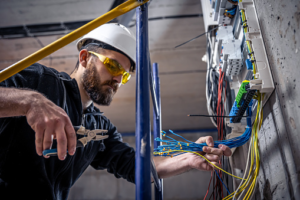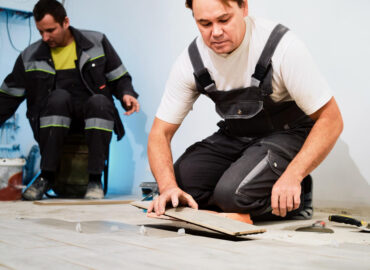Regarding the security and effectiveness of the electrical system in your home rewiring could be a wise investment. The electrical wiring in your house may ultimately deteriorate, become outdated, or cease sustaining the electrical demands of modern technologies. Rewiring your home may increase its value, improve energy efficiency, and reduce the danger of fatal electrical fires.
Home rewiring refers to replacing the electrical wiring, switches, and outlets in your home. Only an electrician with the requisite training and experience should do this challenging and sometimes dangerous task. An electrician will carefully analyse your current electrical system before determining the best course of action for your needs. This might include upgrading outdated electrical components, adding more circuits to accommodate more devices and appliances, or completely redoing your home’s wiring.
How to Improve Safety While Home Rewiring
Home rewiring can be a complex and potentially dangerous process. It’s important to take the necessary steps to enhance safety when performing rewiring work in your home. Here are some tips to consider:
1. Employ a Licenced Electrician.
Hiring a qualified electrician is the most crucial step in guaranteeing safety during house rewiring. A certified electrician is equipped with the knowledge and skills needed to analyse the rewiring project effectively and do it safely.
2. Make Sure to Switch It off First.
Make careful to switch off the electricity to the area where the rewiring is being done before any work is done. This will lessen the possibility of electrical fires and electrocution.
3. Utilise the Correct Tools and Equipment.
Electricians handle electrical wiring securely by using specialised tools and equipment. The danger of harm or electrical system damage might rise when using incorrect tools or equipment.
4. Examine the Wires First.
Inspect them with a circuit tester to make sure the power is off. This will guarantee that work is being done on a de-energized system and help avoid electrocution.
5. Employ Safe Wiring Methods.
To guarantee that wires are put safely and properly, electricians use a range of methods. This involves routing cables away from possible dangers, utilising the correct wire connections, and fastening wires with clamps or staples.
6. Make Sure to Abide By Building Codes and Regulations.
Building codes and regulations are in place to make sure that electrical systems are built securely and to ward off any risks. Ensure that all applicable building rules and regulations are followed throughout the rewiring process.
7. Instal Safety Equipment.
Put safety equipment in your electrical system, such as arc-fault circuit interrupters (AFCIs) and ground-fault circuit interrupters (GFCIs). These tools may guard against electrical accidents and fires.

In summary, rewiring a house entails changing the electrical wiring, switches, and outlets all around it to boost security, efficiency, and property value. Only an electrician with the necessary knowledge and expertise should do this complicated and sometimes risky work.
Furthermore, rewiring may enhance energy efficiency, lower the risk of electrical fires, and raise a property’s value. Employing a certified electrician, turning off the power, using the right tools and equipment, testing the wires before touching them, using the right wiring techniques, adhering to building codes and regulations, and installing safety equipment like AFCIs and GFCIs in the electrical system are all important safety precautions to take during the rewiring process.

Lynn covers artistic collaborations, curating stories that celebrate craftsmanship and design innovation.






